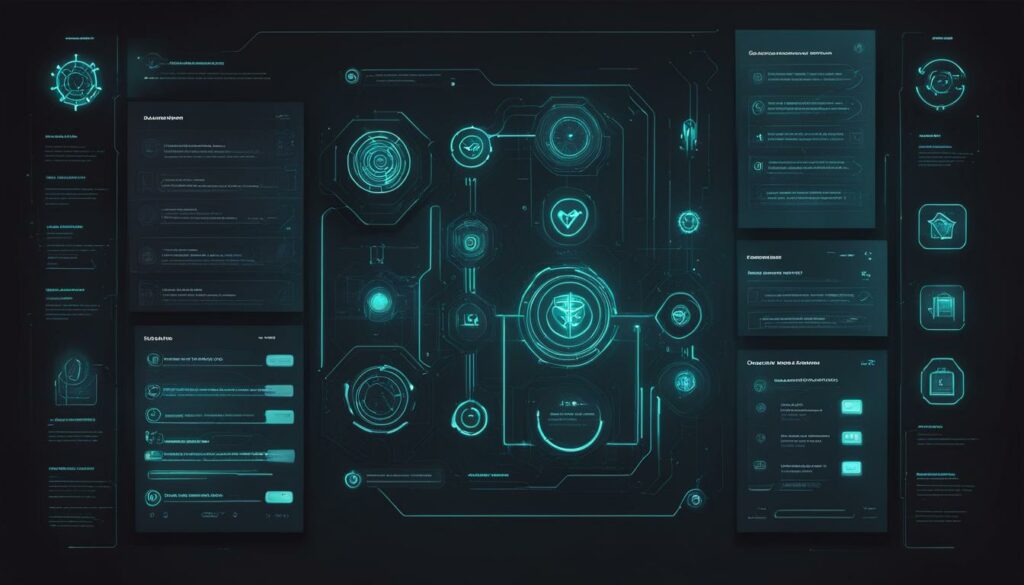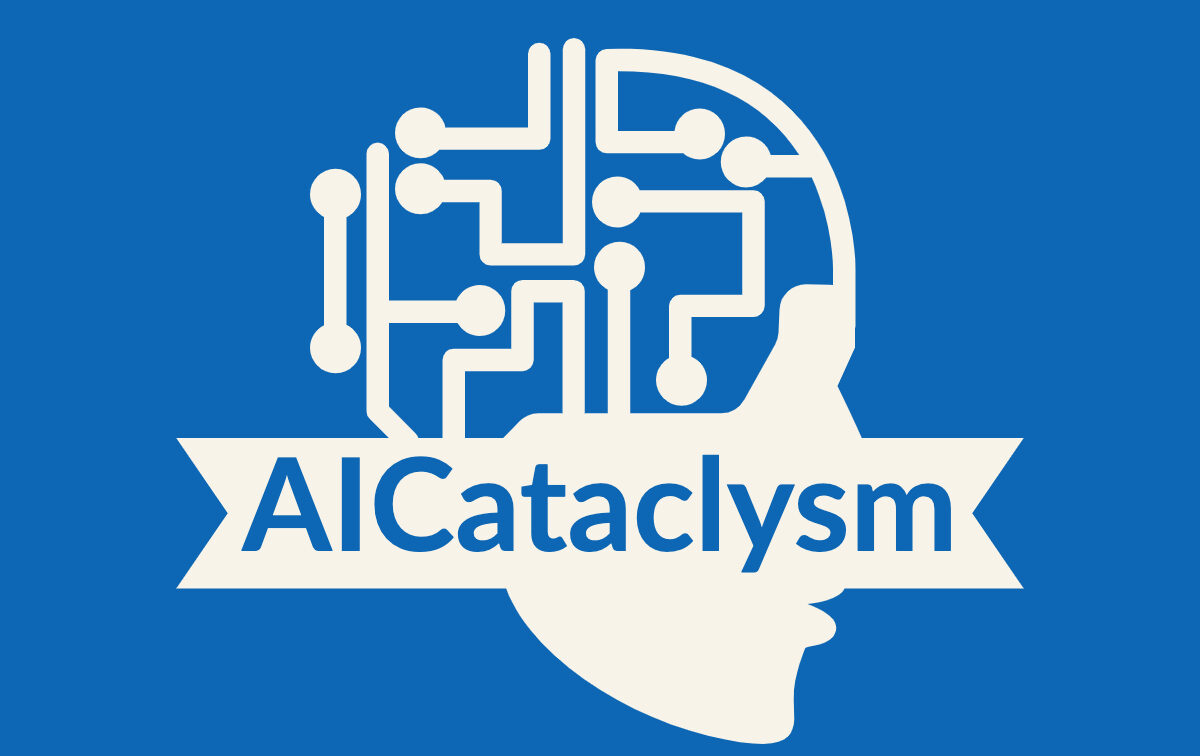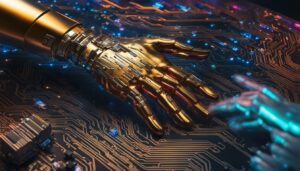The integration of Artificial Intelligence (AI) in various industries has sparked a debate about its potential impact on the field of User Experience (UX) design. As AI tools and technologies continue to advance, designers are questioning whether AI will eventually replace human designers in the UX design process.
AI in UX design has shown promising advancements, with tools like Galileo AI and Figma AI automating certain tasks and aiding designers in generating design variations. However, it is important to consider the limitations of AI tools and the unique value that human expertise brings to the field of UX design.
While AI tools can assist in specific aspects of the design process, they currently lack the ability to understand the complexities of user needs, make critical design decisions, conduct thorough research, collaborate effectively with stakeholders, and sell designs. Human designers also possess essential skills outside of design tools, such as user research and problem definition, which are not easily automatable.
While AI has the potential to enhance certain aspects of UX design, it is unlikely to completely replace human designers. The human touch in UX design, including empathy, creativity, critical thinking, and understanding user emotions, remains invaluable in creating exceptional user experiences.
Key Takeaways
- AI tools such as Galileo AI and Figma AI have shown promise in automating certain tasks in UX design but still have limitations in understanding complex user needs and making critical design decisions.
- The unique value of human designers lies in their empathy, creativity, critical thinking, and ability to understand user emotions, which are not easily replicable by AI.
- While AI has the potential to enhance UX design processes, human designers will continue to play an essential role in creating meaningful and impactful user experiences.
- AI in UX design can streamline workflows, improve productivity, and deliver better user experiences when used as a complementary tool alongside human expertise.
- The future of UX design is likely to be shaped by the harmonious collaboration between AI technology and human designers, leveraging the strengths of both for optimal results.
The Limitations of AI Tools for UX Design
While AI tools such as Galileo AI and Figma AI have shown impressive capabilities in generating designs, they still have limitations when it comes to UX design. These tools face challenges in understanding and interpreting user needs, making informed design decisions, and handling the complexity of real-life projects. Although they can generate designs based on text prompts or design language, AI tools often require specific and detailed prompts and may produce results that do not fully align with the desired design.
AI tools also lack the ability to conduct research, collaborate with stakeholders, and adapt to changing project requirements. They rely on specific inputs and lack the flexibility to handle the dynamic nature of UX design. Furthermore, AI tools cannot match the expertise and skills of human designers in creating user-centered and impactful designs. Designers spend time engaging in activities such as user research, problem definition, and collaboration, which are not easily automatable.
In summary, while AI tools have made advancements in generating designs, their limitations in understanding user needs, making design decisions, and adapting to project requirements highlight the need for human designers. Human designers possess the necessary skills and expertise to create user-centered and meaningful designs that go beyond what AI tools can currently achieve.
Challenges of AI in UX Design
AI tools face challenges in understanding and interpreting user needs, making informed design decisions, and handling the complexity of real-life projects.
AI Tools for UX Design Limitations
- AI tools require specific and detailed prompts
- Results may not fully align with the desired design
- Lack of ability to conduct research and collaborate with stakeholders
- Inflexibility in adapting to changing project requirements
- AI tools cannot match the expertise and skills of human designers
The Importance of Human Expertise in UX Design
In the rapidly evolving field of UX design, the role of human designers remains crucial. While AI tools have their place, they cannot replicate the unique skills and capabilities that human designers bring to the table. UX design is a multidimensional process that requires empathy, creativity, critical thinking, and problem-solving abilities, all of which are inherent to human designers.
Human designers possess the expertise to conduct in-depth user research, gaining insights into user needs and behaviors. They are adept at translating these findings into intuitive and user-friendly designs that cater to the target audience. Collaborating effectively with stakeholders and adapting to project requirements are additional strengths of human designers, enabling them to create designs that align with business objectives and user expectations.
What sets human designers apart is their ability to infuse the human touch into UX design. They understand that design is not just about aesthetics; it’s about creating meaningful and impactful user experiences. Human designers take into account factors such as emotions, cultural context, and user psychology to craft designs that resonate with users on a deeper level.
“Human designers possess the expertise to conduct in-depth user research, gaining insights into user needs and behaviors.”
A distinguishing factor of human expertise in UX design is the iterative nature of the design process. Human designers are skilled at analyzing user feedback, identifying patterns, and making informed design decisions based on the insights gained. This iterative approach allows for continuous improvement and refinement of the user experience, ultimately resulting in better products or services.
While AI tools can assist in certain aspects of UX design, the human touch remains essential for innovation and creativity. The ability to think critically, adapt to changing circumstances, and empathize with users cannot be replicated by AI. Design is a collaborative and human-centered process, and human designers play a vital role in ensuring that user needs are met and exceeded.
A Comparison of Human Designers and AI Tools in UX Design
| Human Designers | AI Tools | |
|---|---|---|
| Expertise | Embrace empathy, creativity, critical thinking, problem-solving | Limited to predefined tasks and capabilities |
| User Research | Conduct in-depth research to understand user needs | Limited understanding of complex user needs |
| Collaboration | Efficiently collaborate with stakeholders | Cannot actively engage and collaborate with stakeholders |
| Adaptability | Adapt designs to changing project requirements | Struggles with flexibility and adapting to dynamic situations |
| Emotional Connection | Understand and design for emotions and psychological factors | Minimal capability to cater to emotional and psychological aspects |
| User Feedback | Analyze and interpret user feedback for iterative improvements | Limited in understanding complex user feedback patterns |
As showcased in the table, human designers possess a wide range of abilities and skills that go beyond the capabilities of AI tools. The human touch in UX design is crucial for creating exceptional and impactful user experiences that resonate with users on an emotional level.
While AI tools have their place in UX design as helpful assistants, human expertise remains invaluable in driving innovation, creativity, and problem-solving. The future of UX design will likely involve a harmonious collaboration between human designers and AI technology, leveraging the strengths of both to create exceptional user experiences.
The Potential of AI in UX Design
While AI may not replace UX designers entirely, it has the potential to greatly enhance the design process. AI-enhanced UX design offers numerous benefits, such as improved efficiency and streamlined workflows. By leveraging AI tools like Galileo AI and Figma AI, designers can automate repetitive tasks, generate design variations, and receive valuable design recommendations.
This integration of AI in UX design brings several advantages. Designers can save time by automating tasks that would otherwise be time-consuming, enabling them to focus on strategic and creative aspects of the design process. AI can also assist in generating initial design concepts and providing design system recommendations, improving the overall efficiency of the design workflow.
AI in UX design goes beyond just automation. It can also analyze user data, providing valuable insights that can inform the design process. By leveraging AI to analyze user data, designers can better understand user behavior and preferences, enabling them to create more user-centered and impactful designs.
Ultimately, the potential of AI in UX design lies in its ability to enhance design efficiency and productivity. By delegating certain tasks to AI, designers can allocate their time and resources more effectively, resulting in better quality designs and improved user experiences.
“AI-enhanced UX design has the potential to revolutionize the way designers work, allowing us to be more efficient and strategic in our design process.”
The Benefits of AI in UX Design
The benefits of AI in UX design can be summarized as follows:
- Improved design efficiency and streamlined workflows
- Automated repetitive tasks and generated design variations
- Provided design recommendations based on user data analysis
- Enabled designers to focus on strategic and creative aspects of the design process
- Improved understanding of user behavior and preferences
This table illustrates the potential benefits of AI in UX design:
| Benefits | Description |
|---|---|
| Improved design efficiency | AI can automate repetitive tasks, saving time for designers. |
| Streamlined workflows | By delegating certain tasks to AI, designers can focus on more strategic aspects of the design process. |
| Design automation | AI can generate design variations and recommendations, enhancing the creative process. |
| Analytics-driven insights | AI can analyze user data to provide valuable insights for informed design decisions. |
| Improved user experiences | By leveraging AI in UX design, designers can create more user-centered and impactful designs. |
By embracing the potential of AI in UX design, designers can unlock new possibilities, improve design efficiency, and deliver better user experiences.
By leveraging AI tools, designers can streamline their workflows, improve design efficiency, and deliver exceptional user experiences. The potential of AI in UX design is vast, enabling designers to automate repetitive tasks, generate design variations, and gain insights from user data analysis. With this integration of AI, designers can focus more on strategic and creative aspects of the design process while relying on AI for data analysis and execution. This combination of human expertise and AI capabilities has the power to revolutionize the field of UX design and enhance the overall design process.
The Role of AI in Ideation and Prototyping
AI is revolutionizing the field of UX design in various ways, including its role in ideation and prototyping. AI-powered tools, such as Galileo AI and other generative design tools, have the potential to assist designers in generating innovative ideas, exploring design variations, and creating prototypes at a rapid pace.
These AI tools can save designers valuable time and provide them with fresh perspectives and creative possibilities. By leveraging the power of AI in the ideation phase, designers can quickly generate a wide range of design options, allowing them to explore different directions and experiment with new concepts.
Moreover, AI can significantly speed up the prototyping process. Designers can use AI tools to quickly generate prototype variations based on their initial designs. This enables them to iterate and refine their ideas much more efficiently. The ability to test different options and gather feedback from users early on allows designers to make informed design decisions and deliver better user experiences.
AI’s contribution to ideation and prototyping extends beyond just speed and efficiency. These tools can also uncover new design possibilities that human designers may not have considered initially. By analyzing vast amounts of data and identifying patterns, AI tools can generate design recommendations and offer alternative solutions that designers may have overlooked.
The Benefits of AI in Ideation and Prototyping:
- Time-saving: AI tools streamline the ideation and prototyping processes, allowing designers to work more efficiently.
- Innovative ideas: AI-powered tools can suggest new design possibilities and inspire designers with fresh perspectives.
- Rapid prototyping: AI tools generate prototypes quickly, enabling designers to iterate and refine their designs at a faster pace.
- Design exploration: AI facilitates the exploration of a wider range of design alternatives, helping designers uncover new solutions.
- Data-driven decisions: AI tools provide insights and recommendations based on data analysis, assisting designers in making informed design choices.
However, it’s important to note that while AI can greatly enhance the ideation and prototyping phases, it should not replace human designers. The unique blend of creativity, empathy, and critical thinking that human designers possess remains invaluable in creating meaningful and impactful user experiences. Human designers provide the necessary human touch and can apply their expertise to interpret and incorporate user feedback in a way that AI tools cannot replicate.
By combining the strengths of AI-powered tools and human design expertise, designers can leverage AI’s capabilities to unleash their creative potential and deliver exceptional user experiences.
“AI-powered tools streamline the ideation and prototyping processes, allowing designers to work more efficiently.”
The Importance of Human Testing and Iteration
While AI can assist in generating design concepts, testing and iterating on those designs still require a human touch. Human testing in UX design plays a crucial role in understanding user preferences, behaviors, and pain points. User feedback obtained through human testing provides valuable insights that help improve the overall user experience.
Unlike AI tools, human testers have the ability to make nuanced observations and analysis, going beyond what automated scripts can provide. They can interpret user feedback, identify patterns, and make informed design decisions based on their expertise and understanding of user needs. Human testers can also adapt their testing approach based on real-time feedback and observations, ensuring a more thorough and insightful evaluation of the design.
The iterative design process relies heavily on the creativity and problem-solving abilities of human designers. Through iterative design, designers can continuously refine and improve the user experience based on user feedback and testing results. By embracing an iterative approach, designers can address user pain points, enhance usability, and optimize the overall effectiveness of the design.
Human touch in design testing encompasses not only the ability to conduct tests but also the empathy and understanding of user emotions and behaviors. This human-centered approach allows designers to consider the psychological and emotional aspects of the user’s journey, resulting in designs that resonate with users on a deeper level.
The iterative design process, combined with human testing and feedback, allows designers to create user experiences that truly meet user needs and surpass expectations.
Benefits of Human Testing and Iteration in UX Design
The importance of human testing and iteration in UX design can be summarized in the following points:
- Insights into user preferences, behaviors, and pain points
- Nuanced observations and analysis
- Interpretation of user feedback and identification of patterns
- Informed design decisions based on user insights
- Adaptability in the testing process for real-time improvements
- Refining the user experience through iterative cycles
- Addressing user pain points and enhancing usability
- Optimizing the overall effectiveness of the design
- Consideration of user emotions and behaviors for a deeper connection
The combination of human expertise, user feedback, and iterative design cycles ensures that the design evolves to meet user needs and expectations. Human testing and iteration provide the necessary human touch that complements the capabilities of AI tools, resulting in user experiences that are truly exceptional.
The Role of User Feedback in Iterative Design
User feedback is a driving force behind the success of iterative design. By actively seeking user input throughout the design process, designers can gain valuable insights that shape the direction of their designs. Through user feedback, designers can identify pain points, uncover usability issues, and validate design decisions.
Incorporating user feedback into iterative design cycles allows designers to continually improve and refine their designs. User feedback serves as a guidepost, helping designers make informed decisions about design changes and enhancements. By listening to user feedback and iterating on the design based on those insights, designers can create user experiences that align with user expectations and preferences.
Example of a User Feedback Iteration Cycle
Let’s consider an example of how user feedback can drive the iterative design process:
| Iteration Cycle | User Feedback | Design Changes |
|---|---|---|
| Iteration 1 | Users find the navigation confusing and struggle to find key information. | Redesign the navigation menu for improved clarity and ease of use. |
| Iteration 2 | Users report difficulties in completing a specific task due to unclear instructions. | Rework the task flow and provide more explicit instructions to guide users. |
| Iteration 3 | Users express frustration with slow loading times and long wait periods. | Optimize website performance and reduce loading times to enhance user satisfaction. |
| Iteration 4 | Users suggest additional features that would enhance their overall experience. | Assess user suggestions and implement relevant features to add value for users. |
| Iteration 5 | Users provide positive feedback on the improved navigation and overall usability. | Consolidate design changes and refine any remaining usability issues for further improvements. |
By incorporating user feedback at each iteration cycle, designers can continually refine the design, addressing user pain points and improving the overall user experience.
The Future Potential of AI in UX Design
While AI in its current state may not be capable of fully replacing human designers, the future holds exciting possibilities for the integration of AI technology in UX design. As AI continues to advance, it has the potential to revolutionize the way designers understand user needs, generate creative designs, and deliver personalized experiences. The future of AI in UX design promises advancements that can greatly enhance the design process and improve user outcomes.
With further development, AI may become more adept at understanding the complexities of user needs. By analyzing vast amounts of data, AI algorithms can identify patterns and make accurate predictions about user behaviors and preferences. This capability will enable designers to create highly personalized and tailored user experiences that truly resonate with their audience.
Empathy-driven AI
Another area of future potential lies in AI’s ability to empathize with users. As AI technology evolves, it may become more proficient in understanding and interpreting user emotions, allowing for the creation of emotionally intelligent designs. This empathetic AI can contribute to the development of user experiences that better address the emotional needs and desires of individuals, leading to more impactful and engaging designs.
Design Assistance and Automation
A key aspect of the future potential of AI in UX design lies in the field of design assistance and automation. AI tools have the ability to streamline design workflows, automate repetitive tasks, and generate design recommendations. By offloading mundane and time-consuming design tasks to AI, designers can focus more on strategic and creative aspects of the design process, allowing them to deliver high-quality designs in a shorter amount of time.
AI in UX design has the potential to transform the way designers work, unlocking new levels of efficiency, creativity, and effectiveness in the design process.
Human-AI Collaboration
Ultimately, the future of AI in UX design is not about AI replacing human designers, but rather about the collaboration between humans and AI. Designers will continue to bring their unique human qualities such as creativity, critical thinking, and empathy to the design process. AI will act as a powerful tool that enhances and supports these qualities, enabling designers to push the boundaries of what is possible and create extraordinary user experiences.
Through collaboration with AI, designers can leverage its strengths in data analysis, pattern recognition, and automation while benefiting from their own expertise in understanding user needs, making design decisions, and delivering emotionally impactful experiences. This harmonious combination of human and AI capabilities will result in user experiences that are intuitive, delightful, and truly transformative.

Ethical and Privacy Concerns with AI in UX Design
The integration of AI in UX design raises ethical and privacy concerns that designers and organizations must address. AI relies on data to learn and make predictions, and this data can include personal and sensitive information. Designers and organizations must ensure the ethical collection, storage, and use of user data when deploying AI tools in UX design. There is also a risk of bias in AI algorithms, which can perpetuate inequities and discrimination. Designers need to be aware of these biases and take steps to mitigate them in order to create inclusive and fair user experiences. Additionally, designers should communicate clearly with users about the use of AI in their designs and provide transparent information on data collection and usage to build trust.
The Current State of AI in UX Design
AI tools have made significant advancements in recent years and are beginning to impact the field of UX design. Prominent AI tools for UX design, such as Galileo AI and Figma AI, are being adopted by some designers and organizations.
These AI tools offer promising capabilities that can automate certain aspects of the design process and assist designers in generating design variations. With AI, designers can save time and explore a wider range of design possibilities.
However, the adoption of AI in UX design is still in its early stages. Many designers continue to rely on traditional methods and tools, recognizing the unique value of human expertise in the design process.
A balance between human expertise and AI assistance characterizes the current state of AI in UX design. Designers are exploring the potential of AI while recognizing its limitations and considering the ethical implications.
As AI technology continues to advance and more robust AI tools become available, the adoption of AI in UX design may increase in the future. However, it is essential to maintain a human-centric approach and ensure that AI remains a complementary tool rather than a replacement for human designers.
Benefits and Limitations of AI in UX Design
| Benefits | Limitations |
|---|---|
| Automates repetitive tasks | Lacks understanding of complex user needs |
| Assists in generating design variations | Lacks the ability to make informed design decisions |
| Streamlines workflows and saves time | Unable to handle the complexities of real-life projects |
| Provides data-driven insights | Lacks the ability to conduct research and collaborate with stakeholders |
| Promotes design efficiency | May produce results that do not fully align with the desired design |
While AI tools have the potential to enhance certain aspects of UX design, they are not yet capable of fully replacing human designers. Human expertise, creativity, empathy, and critical thinking skills remain vital in creating exceptional user experiences.
Designers should continue to embrace AI as a valuable tool that can assist in certain aspects of the design process. By leveraging the benefits of AI and combining them with human expertise, designers can unlock new possibilities and deliver impactful user experiences.
The Unique Value of Human Designers
Despite the advancements in AI technology, the unique value of human designers in UX design cannot be understated. Human designers bring creativity, empathy, and critical thinking to the design process, skills that are not easily replicable by AI.
Human designers have the ability to understand user needs, think critically about design decisions, and adapt to complex project requirements. Their expertise in UX design goes beyond technical proficiency; it encompasses a deep understanding of human behavior, psychology, and cultural context.
“Human designers possess a range of soft skills that are essential for successful UX design. These include collaboration, communication, and user empathy, which allow designers to create experiences that resonate with users on a profound level.”
While AI tools can assist in certain aspects of the design process, the unique value of human designers lies in their ability to create meaningful and impactful user experiences through a holistic and human-centric approach.
The Role of Human Designers
Human designers play a crucial role in the AI era by bringing their expertise to the table and complementing AI tools. They work in tandem with AI, leveraging its capabilities while infusing their designs with a deep understanding of human needs and emotions. This collaboration between human designers and AI technology results in user experiences that are both innovative and tailored to the intricacies of human behavior.
Human designers also excel in areas where AI currently falls short. They have the capacity to understand and interpret subjective nuances and intricacies that AI may struggle to fully grasp. Design decisions often require a consideration of human emotions, cultural context, and individual preferences. This level of understanding and consideration is something that human designers naturally possess and excel at.
The Value of User Research and Testing
Another area where human designers shine is in user research and testing. While AI can provide data-driven insights and analytics, the interpretation of this data and the ability to ask the right questions lies in the hands of human designers. User research is a multidimensional process that involves empathy, observation, and interviews, which are skills that human designers bring to the table.
Human designers are also experts in usability testing, which involves observing and analyzing user interactions with a design. This human touch allows designers to gain valuable insights and make informed design decisions based on the feedback they receive. While AI can automate certain aspects of user testing, it lacks the ability to effectively analyze and interpret user feedback in a comprehensive and nuanced manner.
Collaboration and Stakeholder Communication
Collaboration and effective communication are essential in the design process, and human designers excel in these areas. They have the ability to collaborate with stakeholders, understand their needs and expectations, and translate them into actionable design solutions. Through collaboration, human designers ensure that the design aligns with business goals, user needs, and technical feasibility.
Additionally, human designers possess the ability to communicate design decisions and rationales to stakeholders, promoting transparency and building trust. This level of communication is crucial in garnering support for design solutions and involving stakeholders in the decision-making process. The human touch in communication brings clarity and understanding, creating synergies among team members and stakeholders.
AI and the Future of UX Design
The integration of AI technology is set to shape the future of UX design, offering designers a range of sophisticated tools to assist them in the design process. As AI continues to advance, these tools will become even more capable, providing support across various aspects of design. AI has the potential to automate repetitive tasks, generate design recommendations, and offer valuable data-driven insights.
Designers can collaborate with AI tools to generate innovative design concepts and optimize user experiences. However, it is crucial to strike a balance between AI assistance and human expertise to ensure the creation of exceptional and user-centered designs. The future of UX design will be characterized by a harmonious collaboration between human designers and AI technology, leveraging the best of both worlds.
The Impact of AI in UX Design
AI-driven UX design has the potential to revolutionize the industry by streamlining workflows and enhancing design outcomes. With AI automating repetitive tasks, designers can focus their time and energy on strategic and creative aspects of the design process. AI can also generate design recommendations and variations, allowing designers to explore a wider range of possibilities quickly.
Through the integration of AI, designers can optimize user experiences by leveraging data-driven insights. By analyzing user behavior and preferences, AI can help designers make informed design decisions and create personalized experiences. Additionally, AI can assist in prototyping and iteration, enabling designers to iterate rapidly and refine their designs based on user feedback.
The Role of Human Designers
While AI brings significant advancements to UX design, human designers continue to play a crucial role in the creative process. The unique skills and expertise of human designers, such as empathy, critical thinking, and creativity, cannot be replaced by AI. Human designers possess the ability to understand complex user needs, think critically about design decisions, and adapt to project requirements.
Moreover, human designers excel in collaboration, communication, and understanding user emotions, which are essential for creating meaningful and impactful user experiences. They bring a human-centric approach that considers cultural context, user psychology, and emotional factors, resulting in designs that resonate with users on a deeper level.
Creating a Synergy between AI and Human Designers
The future of UX design lies in achieving a synergy between AI and human designers. While AI can assist in automating certain tasks and providing data-driven insights, human designers bring the nuanced understanding and creative problem-solving skills necessary to deliver exceptional user experiences. Collaborating with AI tools allows designers to leverage the power of AI while infusing their designs with the human touch.
By striking the right balance between AI and human expertise, designers can leverage AI tools to enhance their capabilities, streamline workflows, and optimize user experiences. The successful integration of AI in the design process will require designers to adapt their skill sets and embrace AI as a complementary tool rather than a replacement for human designers.
The Future Awaits
The future of UX design holds immense possibilities with the continued advancement of AI technology. As AI tools become more sophisticated, designers can expect AI to play a central role in automating repetitive tasks and providing data-driven insights. The future of UX design will be characterized by designers and AI working hand in hand, creating innovative, user-centered designs that truly push the boundaries of what is possible.
Conclusion
In conclusion, the integration of AI in UX design holds great potential for enhancing certain aspects of the design process. AI tools like Galileo AI and Figma AI offer valuable capabilities in automating tasks and generating design variations. However, it is important to recognize the limitations of AI in understanding complex user needs and making informed design decisions.
Human designers bring a unique set of skills that are essential for creating exceptional user experiences. Their empathy, creativity, and critical thinking cannot be fully replicated by AI. As AI technology continues to evolve, designers can expect to leverage AI tools to streamline workflows and enhance their capabilities. While AI may assist in certain aspects of the design process, the role of human designers in UX design will remain vital in providing the human touch, understanding user emotions, and driving meaningful innovation.
Therefore, the future of UX design lies in a harmonious collaboration between human designers and AI technology. By combining the strengths of both, designers can create exceptional user experiences that are driven by innovation and empathy. In this AI-enabled era, it is crucial to maintain a balance between AI assistance and human expertise to ensure the creation of impactful and user-centered designs.






